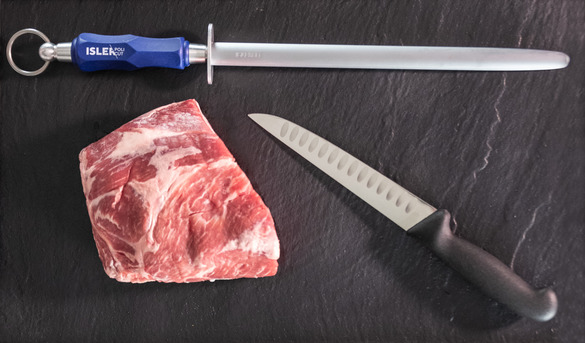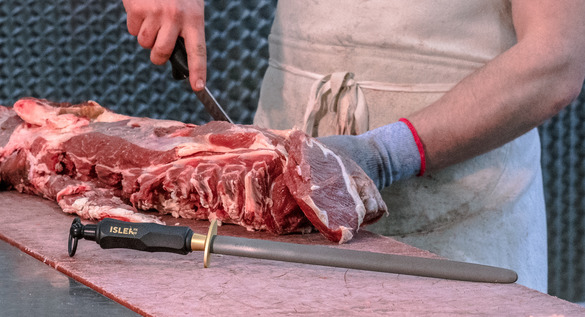In the past K. ISLER AG manufactured a single blade with a standard cut that is relatively rough by today’s standards. On the other hand, this blade could be purchased with very many different handles, some of which were made by hand. Today it is the other way around. As a result of newer grinding methods (belt and hollow grinding), we now manufacture at least five different blades, as well as speciality items manufactured at the request of a few customers from abroad.
1. The standard cut
The normal cut that ISLER has been making for years is called F = finely ridged surface. Such buchter steels are favoured by trainees. But the butcher who only sharpens his knives from time to time will also reach for such butcher steels. Attention! If used on newly ground knives, a new F-grade butcher steel will quickly create a burr.
2. The leader among ISLER steels
is undoubtedly the SUPERCUT. We developed this steel as a special product around 15 years ago. Today it is our top-selling butcher steel, suitable not only for boning knives but also for bench and block knives.
Incidentally: Finely ridged steels are not simply worn-out steels. We create almost twice the number of individual ridges on a steel blade when we manufacture a SUPER CUT.
3. The smoothest ISLER steel
is the POLICUT. Very thinly ground knives such as filleting knives, trimming knives, salmon knives and charcuterie knives achieve unparalleled sharpness when whetted on a POLICUT. Of course, blunt knives – not to mention nicked knives – cannot be resharpened with this special tool. The super-fine surface of this butcher steel cannot withstand knives that are in poor condition. But professionals who love fine quality will never give up this butcher steel.
4. The shiniest ISLER steel
is the SILVERCUT, polished to a high gloss. It is our only buchter steel without any ridged surface at all. This steel will never “snag.” This tool is comparable to the leather strap barbers once used to hone their razors. Those who thinly grind their skinning or boning knives will get great pleasure from this buchter steel, which turns sharply ground blades into razors. Those who maintain their newly ground knives with the SILVERCUT will never complain of a wire edge or burr on its cutting edge. A buchter steel that polishes but does not take off any material.
5. The hardest of the ISLER steels
is the PX 88, the top product of a technically innovative combination: precise manufacturing techniques and the most modern manufacturing technology. The PX 88 effectively goes into action where other butcher steels fail to do their job. Its extraordinarily high level of surface hardness enables the PX 88 to restore the keenest edge even to knives which would otherwise need to be reground. Trips to the grinding machine are reduced almost by half.


